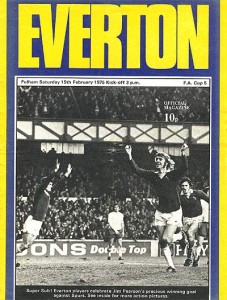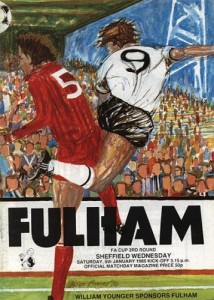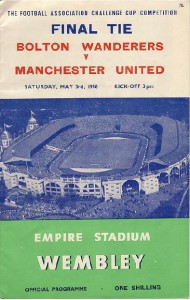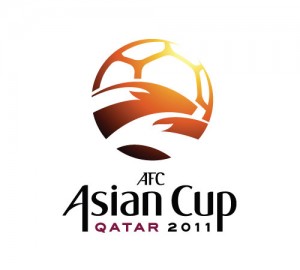Tonight at Elland Road, Leeds United juniors go up against Aston Villa in the FA Youth Cup Fifth Round, hoping to progress and get a step closer to bringing home the trophy for a third occasion. The trials and tribulations surrounding the Academy set-up at Thorp Arch and indeed Simon Grayson’s attitude to home-grown players has been a talking point at the Yorkshire club this season. So rather than focus on the negative, this article instead will focus on the previous two triumphs by Leeds United.
Both Leeds triumphs in the FA Youth Cup occurred within the nineties. The first in the 1992/93 season was secured over Manchester United, with the second in 1996/97 against Crystal Palace. The first triumph is probably best remembered by Leeds fans given the opposition and the reputation of the Manchester United youth team who were the Cup holders.
The 1st Leg of the Final took place at Old Trafford and an incredible crowd of 30,562 turned up as Leeds take a 2-0 advantage (with goals from Jamie Forrester and Noel Whelan) back to Elland Road for the 2nd Leg. For the return Leg back in Leeds, the attendance topped that in Manchester as 31,037 cheered on Paul Hart’s team to a 2-1 victory on the night and a 4-1 aggregate win. The squads for the respective teams was as follows:
Leeds United: Paul Pettinger, Andy Couzens, Kevin Sharp, Mark Tinkler, Kevin Daly, Rob Bowman, Lewis Atkinson, Matthew Smithard, Mark Ford, Noel Whelan, Simon Oliver, Jamie Forrester, Alex Byrne, Steve Tobin, Darren Kerry.
Manchester United: Darren Whitmarsh, Phil Neville, Steven Riley, Chris Casper, Gary Neville, Keith Gillespie, Paul Scholes, David Beckham, Richard Irving, Colin Murdoch, Robbie Savage, Ben Thornley, Nicky Butt, John O’Kane, Mark Rowlinson.
When you look at the names the interest for me is not with those progressed into the Leeds United first team squad, but rather those who didn’t. Of that 1993 squad, Jamie Forrester, Noel Whelan, Rob Bowman, Kevin Sharp, Mark Tinkler, Mark Ford and Andy Couzens did play for the senior team – although their total appearances were less that 170 and therefore none of them could ever be considered as regulars. In terms of the remainder of the squad, goalkeeper Paul Pettinger spent four seasons at Elland Road without making a first team start, before a career mainly taking in a number of Non-League clubs and he is currently plying his trade at Sheffield FC. Like Pettinger, midfielder Matthew Smithard also spent four seasons at Elland Road without making a first team start. In 1996/97 Smithard moved to Bradford City, where he made just one appearance as a substitute. Injury plagued his career in spells with Farsley Celtic, Ossett Town and Guiseley. Forward Steve Tobin also followed the Non-League path taking in Macclesfield Town, Altrincham, Leek Town, Hyde United and Mossley (amongst others) along the way – last playing in the early part of 2010 at Salford City. Simon Oliver was playing for Thackley in the Northern Counties Eastern League up to the end of the 2006/07 season. In terms of trying to trace Kevin Daly, Lewis Atkinson, Alex Byrne and Darren Kerry, I’ve drawn a blank, so would be grateful to anyone who can throw light on whether they stayed within football.
Leeds second Youth Cup came in 1996/97 after a 3-1 aggregate win against Crystal Palace. This team produced a crop of players who were later to be part of the period of Premier League and Champions League football at Elland Road. Robinson, Woodgate, Kewell, McPhail and Smith provided the mainstay of the first team during that period. Whilst Alan Maybury and Matthew Jones also made their contribution in the first team games they played. Of the rest of that squad, Tommy Knarvik came on as a substitute against Portsmouth in an FA Cup tie which proved to be his only outing in a first team shirt, before returning to the Norwegian League and he now plays for Tromso. Lee Matthews made three appearances in the first team and suffered an injury hit career before finally retiring in 2007 after a stint with Livingston and is now a football agent. Midfielder Wesley Boyle had just one substitute outing with the first team and is still playing for Portadown in Northern Ireland. Neither Kevin Dixon nor Damien Lynch made it into the Leeds senior team, with Dixon returning to his native North East playing for a number of Non-League teams including Seaham Red Star, Newcastle Blue Star, Sunderland Ryhope and Bishop Auckland. Lynch returned to the Republic of Ireland after his time at Leeds United and Nottingham Forest and carved a career in the League of Ireland with Bohemians, Drogheda United and St Patrick’s Athletic. Perhaps the most interesting story involves the last member of the 1997 squad Stuart Gore. The following piece is taken from the website of AC Crusaders a football team in the USA who are due to make their debut in the Northeast Keystone Division of the National Premier Soccer League (NPSL), the fourth tier of the American Soccer Pyramid, in 2011.
“…Stuart Gore brings a fantastic playing experience to the AC Crusaders. Having been exposed to some of the game’s most successful soccer coaches, Stuart has used his experiences to develop into a forward thinking coach with a strong tactical sense.
As a player, Stuart was part of the youth team with Leeds United, helping them to win the FA Youth cup. He has also represented the England national team at under 16 and under 17 level. Stuart then attended college here in the states at the University of Montevallo, after which he return to pro soccer with UD Lorca of the 2nd division in Spain.
As a coach Stuart has been coaching with Luton Celtic soccer club and AFC Dunstable, where in 2007 he was given the position of “Head of Coaching and Player Development”. Stuart also served as the vice chairman of the Dunstable schools soccer league in which his team won back to back titles in 2006 and 2007, winning the league cup in 2007.
He holds a UEFA B license, Level 2 in Futsal coaching and is a native of Dunstable, England.
For those players lining up tonight, a place in the next round of the Youth Cup will be the main thing on their mind. The future? Well as the teams of 1992/93 and 1996/97 demonstrated even Cup victory is no guarantee of a successful career. Sometime you just have to enjoy the here and now.
My thanks to the following websites in providing background information used in this article; AC Crusaders official website, The FA, Soccer Base and Wikepedia.
 …. the thing about Roy Race is, well, he’s not really real but he’s sort of real in a life-mirrors-cartoon kind of way. Roy started out looking like Burnley’s Ray Pointer, big blond quiff and all but, as fashions changed, so did Roy’s haircut. To be seen as ‘with it’, suddenly, his hair was combed forward in a way that eerily anticipated Kenny Dalglish’s quizzical look. All the things that were deemed to be happening in the football world from the fifties through to the nineties, Roy and his team, the mighty Melchester Rovers did. European Cups, being kidnapped, repeatedly – all the exciting things that were being covered by the newspapers were given a slight fictional twist and fed to the boys who avidly read their weekly Tiger then Roy of the Rovers comics.
…. the thing about Roy Race is, well, he’s not really real but he’s sort of real in a life-mirrors-cartoon kind of way. Roy started out looking like Burnley’s Ray Pointer, big blond quiff and all but, as fashions changed, so did Roy’s haircut. To be seen as ‘with it’, suddenly, his hair was combed forward in a way that eerily anticipated Kenny Dalglish’s quizzical look. All the things that were deemed to be happening in the football world from the fifties through to the nineties, Roy and his team, the mighty Melchester Rovers did. European Cups, being kidnapped, repeatedly – all the exciting things that were being covered by the newspapers were given a slight fictional twist and fed to the boys who avidly read their weekly Tiger then Roy of the Rovers comics.


 Whilst here in England the weekend has been dominated by the FA Cup including Leeds brave effort at the Emirates, the return of Dalglish to manage Liverpool and Cup shocks from the likes of Stevenage, Notts County, Southampton, Torquay United and Burton Albion – an international tournament kicked off on Friday. Neither BBC Sport or Sky Sports included the fixtures or results on their football website pages.
Whilst here in England the weekend has been dominated by the FA Cup including Leeds brave effort at the Emirates, the return of Dalglish to manage Liverpool and Cup shocks from the likes of Stevenage, Notts County, Southampton, Torquay United and Burton Albion – an international tournament kicked off on Friday. Neither BBC Sport or Sky Sports included the fixtures or results on their football website pages. Reading football biographies or autobiographies is fine as long as you don’t expect them to tell the whole truth about anyone. By their very nature, they have got to be selective. A biography is about a footballer so can never fully penetrate inside the subject’s thoughts. An autobiography is worse for the very reason that it can. In what kind of scrambled mess are
Reading football biographies or autobiographies is fine as long as you don’t expect them to tell the whole truth about anyone. By their very nature, they have got to be selective. A biography is about a footballer so can never fully penetrate inside the subject’s thoughts. An autobiography is worse for the very reason that it can. In what kind of scrambled mess are 